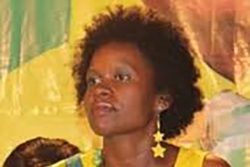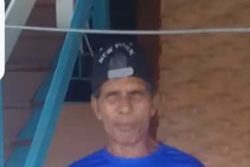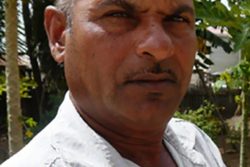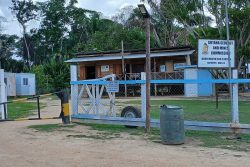A ministerial team recently hosted the first of several planned sub-national consultations on Guyana’s Low Carbon Development Strategy (LCDS) at Annai, Lethem and Aishalton in order to solicit support from these Region Nine communities.
According to a Government Information Agency (GINA) press release about 800 residents from these areas and over 30 neighbouring satellite communities attended the sessions. A team including Minister of Amerindian Affairs Pauline Sukhai, Minister of Foreign Affairs Carolyn Rodrigues-Birkett and several others attended the meetings.
A Surama villager who attended the meeting at Annai said that he supports the initiative and urged the other participants to do so. He told them that it would be difficult for individuals to gain benefits from the strategy and suggested that the funds expected from it be put into development programmes so that all will be able to benefit. He also expressed concerns about mining and logging but thinks that the Strategy will allow more monitoring in the area. “If we are going to go with this strategy, recruitment and training are going to be the most important aspects in this venture,” he said.
Michael Abraham from Nappi Village who attended the Lethem meeting told the group the results of climate change present a “terrifying picture for this country.” In this respect, he supports the LCDS because it paints a “very optimistic and practical picture.” Abraham suggested too that measures be put in place to restrict “big companies” and put a limit on their activities in order to avoid deforestation.
Some areas in the Strategy also aim at developing the clean energy sector through hydro-power and food security and Abraham suggested that attention be refocused on other areas for hydro projects which have great potential. As regard agriculture, he expressed confidence that Region Nine can become self sufficient in rice and other commodities because it has rich soil.
According to GINA, residents also expressed concerns about the effects of large scale agriculture on wet lands and savannahs of the Rupununi; whether some communities which are not heavily forested would be included in the strategy and if they will reap the same benefits as forested communities if they agree to the Strategy; the conditions for villages which decide to opt in and pledge their land to the LCDS; the status of forestry and mining activities under the LCDS and whether Amerindian land titles extensions will continue.
As regard whether forested and non-forested areas will be treated the same way Sukhai said the LCDS embraces the forested section but provisions will be made so that all citizens will benefit from the strategy. She also pointed out that those within the forested area will “receive benefit more directly.” The minister also said provisions will be made to protect the wet lands. The Strategy outlines that 10% of Guyana’s forest will be dedicated to protection, this includes Iwokrama.
Sukhai also gave assurances that while the Strategy focuses on maintaining standing forest, it does so with emphasis on sustainable development. As such plans for large-scale agriculture, mining and logging will be realised while implementing steps that make them sustainable and compliant with international guidelines. Funding from the Strategy will ensure this, she said.
Meanwhile, the foreign minister said communities opting into the Strategy will have to work with government to decide the best alternatives for them. She noted that opting into the Strategy does not mean that villagers will have to change their way of life since their traditional methods have helped to sustain the standing forest. However, if it is found that they are practicing unsustainable activities, government will work with them to develop better practices.
Rodrigues-Birkett assured the participants that they can opt in or out at any time, however they must give feedback on the LCDS over the three-month period assigned as a second outline of the Strategy with their suggestions is being drafted for submission to President Bharrat Jagdeo to take to Copenhagen for the United Nations Convention on Climate Change. The North Rupununi District Development Board has already sent a letter of commitment to the president.
Sukhai also said that there are currently 10 villages awaiting land extensions, and others for the land demarcation process to continue. She said this is a costly venture and government hopes that the process can be speeded up with the funds from the LCDS. The team also committed to giving feedback to the region through the respective toshaos and participants pledged to take back the information garnered to their respective communities.
Consultations will continue soon in regions one, two, six, seven, eight and ten, GINA said.








